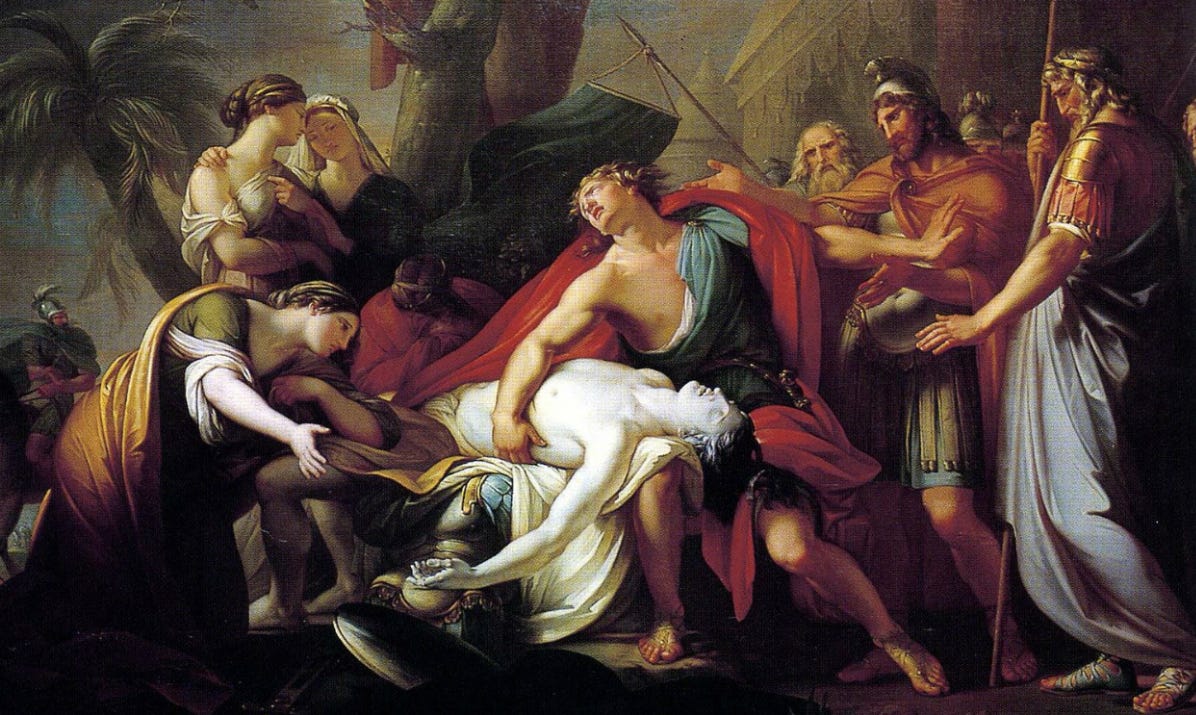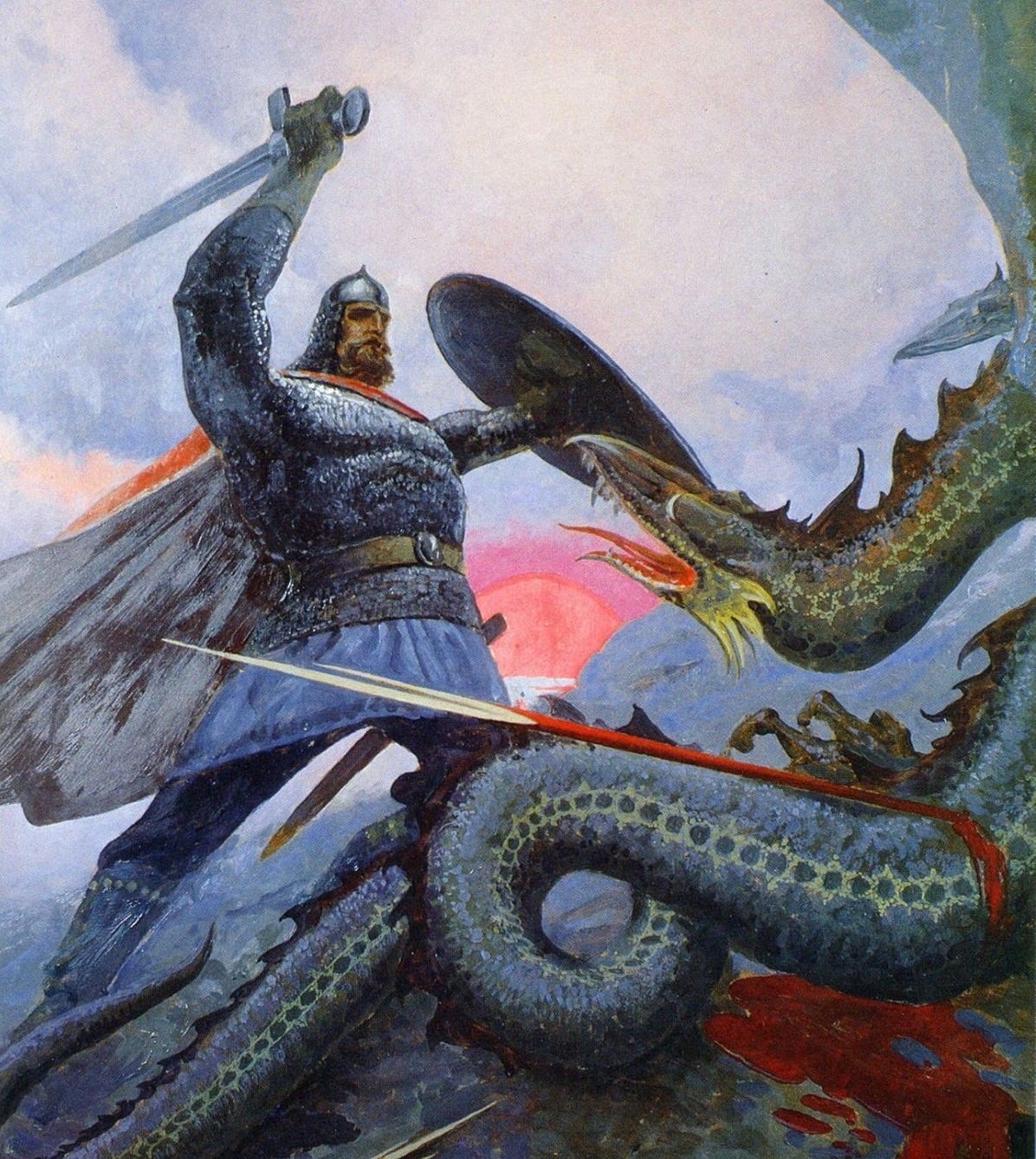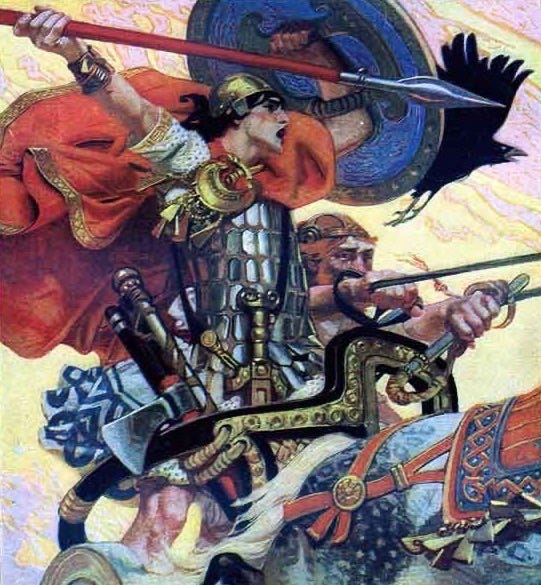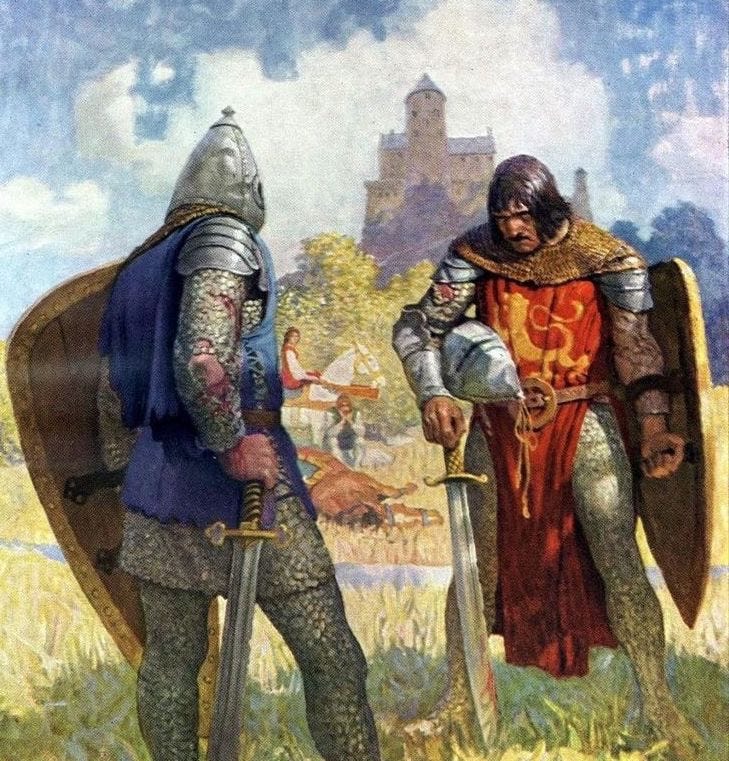The goals of this course:
To take you through Western heroic literature, from Homer to the Middle Ages, in order to understand the European pagan worldview and the Heroic Ideal.
To provide an alternative, non-biblical look at the origins of “Western values” and illuminate the “pagan soul” of Western Civilization.
To create a cannon which can serve as a “Heroic Bible” for Pagans (or Pagano-Christians), and double as educational material for children (in abridged form).
The course will consist only of epics, sagas, Romances, and other texts which concern the deeds of heroes and exemplify the European heroic ideal. If I included history and mythology, the course would be far too expansive and unfocused.
I am not completely settled on which texts I will include in the later sections yet, so I will come back and fill out this list as I go. I will also add more details, such as recommended translations and purchase links as the course progresses.
Section 1: THE GRECO-ROMAN EPICS
The Iliad
The Posthomerica
The Odyssey
The Aeneid
I highly recommend Robert Fagles’ translations of the Iliad, Odyssey, and Aeneid. They are beautifully written, beautifully bound, and available on Amazon and Audible. The Posthomerica is available in this excellent audiobook production, and on Project Gutenberg.
A note on the composition of this section:
The Greco-Roman section was relatively easy to compile. I chose the four epics which together form a complete epic cycle, spanning from the Trojan War to the birth of Rome. The Homeric Hymns are an essential companion to the Greco-Roman epic cycle. I did not include them since this course does not cover myth. Apollonius’ Argonautica also makes a nice edition, best read between the Odyssey and Aeneid, but I chose to exclude it since it is more of an adventure tale than a heroic epic and does not tie into the broader epic cycle. Statius’ Thebiad is worth considering, but I chose to exclude it since it does not fit with the broader cycle and does not fit tonally. Arrian’s Anabasis of Alexander is also worth considering. Though it is technically an historical biography, it covers Alexanders life and exploits in great narrative detail. Some of the plays of Sophocles, Aeschylus, and Euripides are good supplementary material if you want to hear about peripheral events which are only mentioned in the epic cycle in more detail. This narrative reconstruction of the Cypria, using only conjoined ancient sources, is worth reading if you are interested in the lead up to the Trojan War.
Section 2: THE NORSE SAGAS
The Volsung Cycle
The Saga of The Völsungs
The Heroic Lays of the Poetic Edda
The Saga of Ragnarr Loðbrók
Four Legendary Sagas
The Lay of Helgi Hjörvarðsson
The Saga of Hervör and Heidrek
The Saga of Asmund the Champion-Killer
The Saga of Hrólfr Kraki
The Anglo-Saxon Epic
Beowulf
I highly recommend Jackson Crawford’s translation of The Saga of The Volsungs, which includes the saga of Ragnar and his sons. I also recommend his translations of The Saga of Hervör and Heidrek & Hrólfr Kraki’s Saga. The Lay of Helgi, alongside additional material related to the Volsungs, can be found in Jackson Crawford’s translation of the Poetic Edda. The Volsunga Saga and Poetic Edda are available on Audible, narrated wonderfully by Jackson Crawford himself. For the saga of Asmund, I recommend this handy copy by Gavin Chappell. If you are interested in reading other legendary sagas, you can buy them individually on his Amazon page. For Beowulf, I recommend Seamus Heaney’s translation, also available on Audible.
A note on the composition of this section:
For the Norse section, I read every saga that I could get my hands on in order to gather the best into a Norse epic cycle. The first section makes up a continuous narrative following the bloodline of the Volsungs, supplemented by additional material from the Poetic Edda which concerns the Volsungs, especially Gudrun and Helgi. The second section is made up of the four legendary sagas which contain the most heroic and pagan material, with the common theme of berserkers and cursed swords. This section is tied to the Volsung cycle through the reincarnation of Helgi in The Lay of Helgi Hjörvarðsson and to Beowulf through Hrólfr Kraki’ Saga, which introduces the trend towards christianization and shares some characters with Beowulf. Beowulf treats the full christianization of the Norse and the end of the age of heroes. I chose to exclude the family sagas and kings sagas, since they are more historic and Christian, and a majority of the legendary sagas, which are often more along the lines of adventure tales than heroic sagas. I have excluded the Nibelungenlied, a companion to Dietrich’s Saga, focusing on the fall of the Volsungs, because it repeats the Volsung material in a christianized, courtly context. The Poetic Edda, which contains material relating to the gods, is an essential companion for the Norse heroic cycle. Beyond that, there is an overwhelming wealth of sagas of all kinds to explore.
Section 2: IRISH & WELSH
The Ulster Cycle
The Finn Cycle
The Four Branches of the Mabinogi
Section 4: ARTHURIAN
Arthur’s Origins
Culhwch and Olwen
Layamon's Brut
Romance and Chivalry
Ulrich’s Lanzelet
Chretien’s Lancelot
Chretien’s Erec and Enide
Chretien’s Yvain
The Saga of Tristan
Chretien’s Cliges
Crown and Cross
Sir Gawain and the Green Knight
Eschenbach Parzival
The Alliterative Morte Arthure
I will link recommended translations and purchasable copies soon.
Assembling the Arthurian section was a monumental task due to the sheer volume (and length) of the texts. For example, the five texts of the Vulgate Cycle alone, which I have chosen to exclude due to their length and highly moralized content, is about 2 million words. The entire KJV Bible, for comparison, is 780k words. When selecting texts for this section, I have preferred works which preserve pagan motifs and the pagan moral ethos. Therefore, I have excluded all highly moralized/christianized content, like the Vulgate Cycle and the surrounding texts. I have also chosen to exclude the vast number of shorter texts, like the Lais of Marie de France, which are often of lesser substance. As in the Norse section, the more heavily Christian texts have fallen naturally towards the end of the section. Uniquely, this section is tied to the previous three and pulls from English, French, German, Welsh, and Norse sources. Culhwch and Olwen, from the Welsh Mabinogion, serves to tie the Arthurian section of the course to the Welsh/Irish section. I preferred Laymon’s Brut over Wace’s Brut because it is more developed and brings a welcome English addition to the section. Layamon’s Brut ties directly into the Aeneid through Brutus, Britain’s mythical founder, and into the world of the Norse through the conflict between the Britons and the Saxons. I chose Ulrich’s Lanzelet because it covers Lancelot’s childhood, introduces Tristan, Gawain, and Erec, and brings a welcome German addition to the section. I have chosen to cut short the end of Lanzelet, which details his death, so that it runs smoothly into Chretien’s Lancelot. Chretien's four French Romances are the heart of this section and of Arthurian literature more broadly. I inserted the Saga of Tristan before Chretien’s Cliges because Cliges stands out from the other three shorter Romances and was likely, at least in part, a response to Beroul’s Tristan. I chose to preference the Saga of Tristan because the Tristans of Beroul, Thomas, and Strassburg are incomplete. The Norse Saga of Tristan preserves for us a complete translation of Thomas’ Tristian and provides a nice linguistic and tonal tie to the Norse section of the course. The Prose Tristan was excluded due to its gargantuan size (400k words) and its moralizing tone. The last three texts of this section take us into a fully christianized world. I preferred Sir Gawain and the Green Knight over the many other shorter Gawain texts because they all share similar themes and the Green Knight is the best known and of the highest quality. Because of its fame and great craft, I chose to preference Eschenbach’s German Parzival over Chretein’s incomplete Perceval, its messy continuations, and its Welsh counterpart, which does not include any grail material at all. Eschenbach’s Parzival also provides more coverage of Gawain and nicely concludes the grail storyline without the involvement of any of the heavily moralized material found in the Vulgate Cycle, which condemns Lancelot’s heroism. I chose the Alliterative Morte Arthure over Mallory’s version because the latter attempts to cover the entirety of the Arthur cycle, losing much of its color in the process. The Alliterative Morte Arthure also sidesteps the condemnation of Lancelot and Guinevere’s love found in the Vulgate Cycle. It overlaps somewhat with Layamon’s Brut, but provides a much expanded account of Arthur’s fall. Like Beowulf, this English text ends the course with a lament of the loss of the heroic age, as Arthur, the last of the line which first sprung from Aeneas, succumbs to his wounds. Of the texts which I chose to exclude, I found Melion of particular interest due to its wolf transformation. Geoffrey of Monmouth’s Vitae Merlini (Life of Merlin) is also worth consideration, as are the transgressive Lais of Marie de France, which also include a werewolf story.









This is awesome
I feel like the Greco-Roman section should include the Persian Wars and the Peloponnesian War.